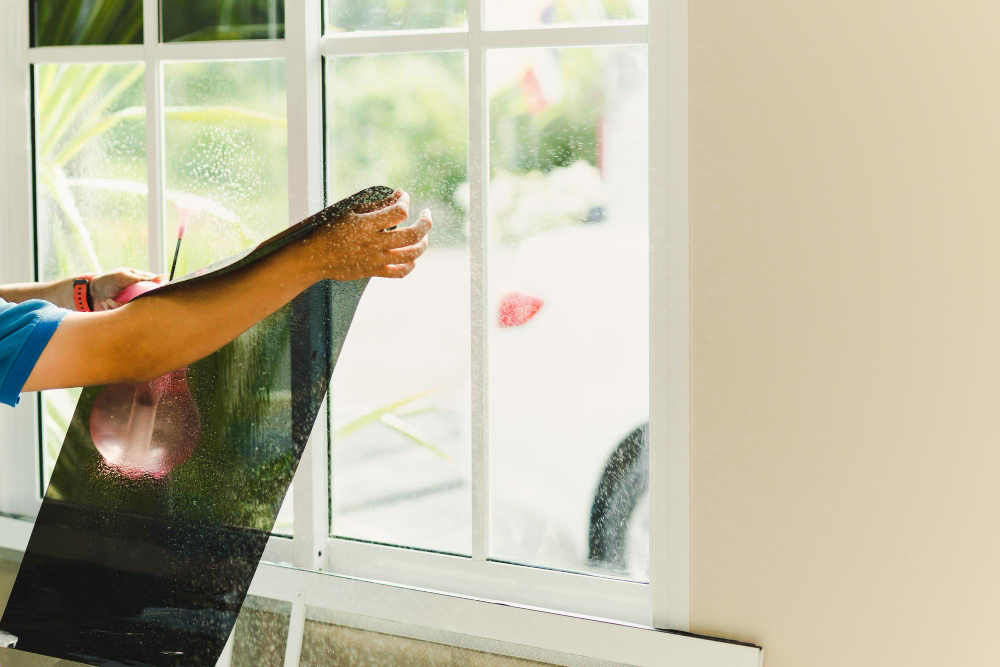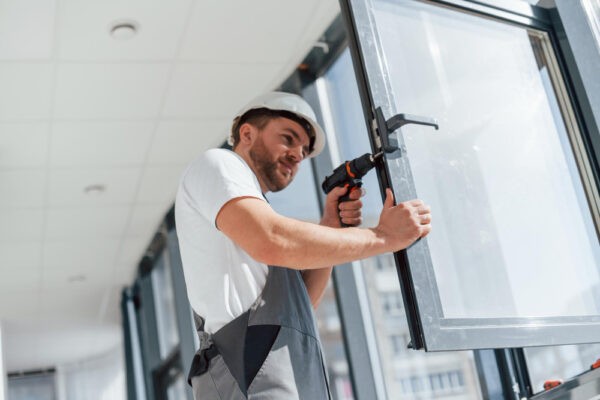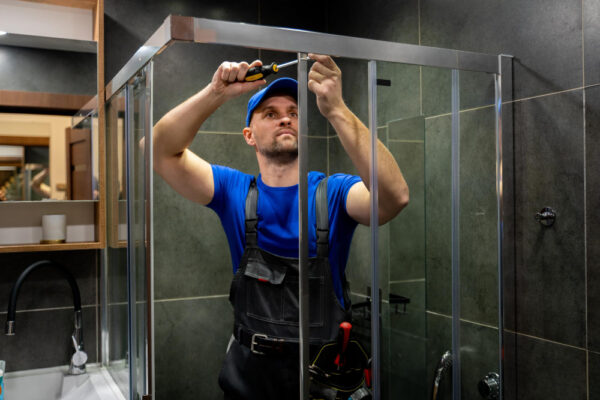Introduction: Your Window to the Road – And Much More
Your vehicle’s windshield is far more than a simple barrier against wind and rain; it’s a critical component of its structural integrity and safety systems. It provides a clear view of the road, supports the roof in a rollover, and ensures proper airbag deployment. When damage like chips and cracks occurs, or when intense sun glare compromises visibility and comfort, addressing these issues through professional auto glass services becomes paramount. Ignoring windshield damage or opting for subpar solutions can put you and your passengers at risk.
Professional services encompassing Windshield repair, Windshield replacement, and Window tinting are designed to restore your vehicle’s safety features, ensure optimal visibility, and enhance your overall driving comfort. This guide explores the importance of addressing windshield damage promptly, the differences between professional repair and replacement (including crucial safety system considerations), and the significant benefits offered by quality window tinting.
Windshield Damage: The Critical Need for Prompt Professional Action
That small chip from a flying rock or the crack spreading across your view might seem minor initially, but they represent significant hazards:
- Compromised Structural Integrity: The windshield contributes significantly to a vehicle’s roof strength. A damaged windshield may not adequately support the roof in a rollover accident.
- Improper Airbag Deployment: Passenger-side airbags are designed to deflect off the windshield upon deployment. A cracked or improperly installed windshield might not withstand the force, affecting airbag performance.
- Obstructed Vision: Cracks and chips, especially in the driver’s line of sight, can distract, obscure hazards, and increase eye strain.
- Risk of Spreading: Small chips and cracks can quickly expand due to temperature changes, road vibrations, or even washing the car, potentially necessitating a more costly replacement later.
Given these risks, having any windshield damage assessed by a qualified auto glass professional immediately is essential for safety.
Windshield Repair vs. Replacement: The Professional Decision Process
Whether your windshield can be repaired or needs replacement depends on the type, size, and location of the damage. Only a trained technician can make this call reliably.
- Professional Assessment: Technicians examine the damage closely. Generally, Windshield repair might be possible if:
- The damage is a chip (like a bullseye or star break) smaller than a quarter coin.
- It involves a single crack shorter than about 3-6 inches (depending on standards).
- The damage is not directly in the driver’s primary line of vision.
- The damage does not reach the edge of the windshield.
- The Professional Windshield Repair Process: If repair is feasible, technicians use specialized equipment to:
- Clean the damaged area thoroughly.
- Create a vacuum over the chip/crack to remove air and moisture.
- Inject a high-quality, clear resin into the damaged area.
- Cure the resin using UV light, hardening it to restore strength and clarity.
- Benefit: A successful professional repair restores the windshield’s structural integrity, prevents the damage from spreading, and is often much faster and less expensive than replacement. It’s also often covered fully by comprehensive auto insurance.
- Professional Windshield Replacement: When damage is too severe or located improperly for repair, replacement is necessary. This involves:
- Carefully removing the damaged windshield without harming the vehicle’s frame (pinchweld).
- Cleaning and preparing the pinchweld area meticulously.
- Applying a high-quality automotive adhesive (urethane) following specific patterns and thicknesses.
- Precisely setting the new windshield using specialized tools.
- Allowing the adhesive to cure fully (Safe Drive-Away Time varies based on adhesive and conditions – professionals provide this critical info).
- Critical Consideration: ADAS Recalibration: Many modern vehicles have Advanced Driver Assistance Systems (ADAS) like lane departure warnings, forward collision alerts, and adaptive cruise control. 1 Cameras for these systems are often mounted on the windshield. After a Windshield replacement, these systems must be recalibrated by trained technicians using specialized equipment. Skipping this step means critical safety features may not function correctly, potentially leading to accidents. Reputable providers include this essential service.
The Importance of Quality Materials and Expert Installation
Whether repairing or replacing, the quality of materials and workmanship is non-negotiable for safety.
- Quality Glass: For replacements, professionals use glass meeting strict safety standards – either OEM (Original Equipment Manufacturer) glass, identical to what the factory installed, or OEE (Original Equipment Equivalent) glass that meets or exceeds OEM specifications for fit, clarity, and durability.
- Proper Adhesives: The adhesive used in replacement is critical. Professionals use industry-approved urethanes designed for automotive use, ensuring a strong, permanent bond that maintains structural integrity and prevents leaks. They also adhere to strict guidelines regarding adhesive temperature, application patterns, and cure times.
- Expertise Matters: Trained technicians ensure the glass fits perfectly, the adhesive creates a complete seal, and all trim and moldings are replaced correctly. Poor installation can lead to wind noise, water leaks, rust on the frame, and most importantly, compromised safety in an accident.

Beyond Repair: Enhancing Comfort and Protection with Window Tinting
Professional auto glass services often extend to Window tinting, which offers significant benefits beyond just aesthetics, especially in sunny climates.
- Benefits of Professional Tinting:
- Heat Rejection: Quality window film blocks a significant amount of solar heat, keeping your car’s interior cooler and reducing the load on your air conditioning system.
- UV Ray Protection: Film blocks up to 99% of harmful ultraviolet rays, protecting occupants from skin damage and preventing fading and cracking of the vehicle’s interior upholstery and dashboard.
- Glare Reduction: Tint reduces blinding glare from the sun and headlights, improving visibility and reducing eye fatigue while driving.
- Increased Privacy & Security: Tinted windows make it harder for potential thieves to see valuables inside your car. Some films also help hold shattered glass together in case of impact.
- Enhanced Appearance: Tinting provides a sleek, customized look for your vehicle.
- The Professional Window Tinting Process: Achieving a flawless, long-lasting tint job requires skill and precision:
- Meticulous cleaning of the interior glass surface.
- Computer-cutting or hand-cutting the film precisely to match each window.
- Careful application using specialized solutions and squeegees to remove all air bubbles and wrinkles.
- Often involves heat-shrinking the film for a perfect fit on curved windows.
- Film Types & Legality: Professionals offer various film types (like dyed, metallic, carbon, ceramic – each with different properties) and crucially, they understand and adhere to local regulations regarding permissible tint darkness (VLT – Visible Light Transmission) for different windows.
Choosing a Qualified Auto Glass Service Provider
Entrusting your vehicle’s glass to the right provider ensures safety and quality. Look for:
- Certified Technicians: Certifications (like from the Auto Glass Safety Council™ – AGSC) indicate adherence to industry best practices.
- Relevant Experience: Ensure they have experience with your vehicle’s make and model, especially if ADAS recalibration is needed.
- Commitment to Quality Materials: Ask if they use OEM/OEE glass and industry-standard adhesives for replacements, and quality film brands for tinting.
- ADAS Recalibration Capability: Verify they have the equipment and trained staff to perform ADAS recalibration if you need a windshield replacement on a newer vehicle. This is non-negotiable.
- Warranty: Reputable providers offer warranties covering defects in materials and workmanship for repairs, replacements, and tinting.
- Insurance Handling: Experienced shops often work directly with insurance companies to streamline claims for covered repairs or replacements.
- Service Options: Consider if they offer mobile service (convenient for some repairs/replacements) or require you to visit their shop (often necessary for ADAS calibration or complex tint jobs).
- Positive Reputation: Check online reviews and ask for local recommendations.
Searching for certified providers specializing in “Windshield repair,” “Windshield replacement,” or “Window tinting” is a good starting point.
Conclusion: Prioritizing Safety, Clarity, and Comfort on the Road
Your vehicle’s glass plays a vital role in your safety and driving experience. Prompt professional attention to windshield damage through expert Windshield repair or quality Windshield replacement (including mandatory ADAS recalibration when applicable) is essential for maintaining structural integrity and clear vision. Furthermore, professional Window tinting offers significant enhancements in comfort, UV protection, and glare reduction. By choosing certified, experienced auto glass professionals who use quality materials and follow industry best practices, you ensure these critical services are performed correctly, providing safety, clarity, comfort, and peace of mind every time you get behind the wheel.


